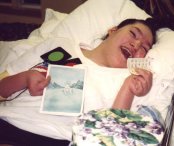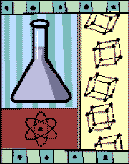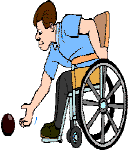The Cerebral Palsy Network
- Spasticity Chart
- Team Approach
- Oral Medications
- ITB
- Rhizotomy
- Orthopedic Surgery
- Brain Injuries
- Casts & Braces
- Physical Therapy
- Glossary Terms
- Credits
- Botox
Around CPN
Resource
Center
ORTHOPEDIC
Surgery
by Tom F. Novacheck, M.D.
Orthopedic surgery, corrects the muscle and bone deformities caused by the spasticity itself. The more severely misaligned a child's muscles and bones, the more likely orthopedic surgery will be needed.
For best outcomes, the child undergoing orthopedic surgery should be between five years old and adolescence and have had appropriate spasticity management. By age five, a child with spasticity probably has physical therapy and oral or injectable medications. If these treatments to decrease spasticity no longer seem effective, orthopedic surgery may be timely.
Patient evaluation for surgery
Usually, a physician must rely on the physical exam, e-rays and videotape to determine if orthopedic surgery is needed. A videotape of both the front and side views of the child walking can be viewed repetivity and in slow motion to help diagnosis. For a child with spasticity, several problems are common; a child's shin bone (tibia) or thigh bone (femur) may be twisted, one or more tendons may be too short (contracted), or the feet may be turned out because of a complex combination of bone and joint deformities within the feet.
Types of orthopedic surgeries
Three fairly common orthopedic procedures illustrate the range of problems that can be addressed by a skilled orthopedic surgeon. All are done under general anesthesia and usually require a hospital stay of one to five days.
Tendon lengthening: Tendon lengthening involves exposing the tendon and dividing it lengthwise into two halves. The two ends of the cut tendon are then rejoined to create a longer, single tendon. The lengthened tendons reduces the tension of the muscle thus reducing muscle tightness. This procedure takes about one half hour. It is usually done at the same time as other orthopedic procedures.
Tendon transfer: In this procedure, the tendon is removed from its point of attachment to the bone and is secured to a new site with a suture (stitches).
Duration is about 45 minutes. Casting or bracing is necessary for three weeks after surgery.
Osteotomy: This procedure, which is performed on the femur (thigh bone) to correct alignment, takes about one hour. A metal plate and screws are inserted to hold the realigned bone in its new position until it heals. Casting after surgery may or may not be necessary. Once the bone is fully healed - usually nine to 12 months later - the metal plate and screws are removed through the original incision, usually as an outpatient operation. Children are able to walk within two days after plate removal and return to their regular activity level.
Multiple lower- extremity procedures: Today, multiple lower extremity procedures ( multiple surgeries during a single trip to the operating room) are done.
Typically, four to seven procedures are performed at one or more locations in the legs (hips, knees, ankles and feet) and may include any of the above procedures.
Postoperative management
Following surgery, immobility is encouraged to prevent the development of excessive weakness and stiffness. If casting is needed, no weight bearing (via standing) is allowed for three weeks. Then weight bearing casts may be used for another three to four weeks.
Physical therapy is essential following orthopedic surgeries. Initially, therapy focuses on range of motion and movement. After that therapy emphasizes building strength, maintaining range of motion and maximizing walking ability.
Depending on the specific surgeries four to six months may be required for a child to regain preoperative skills. This may mean that a child who could walk before surgery may initially need to use a wheelchair or a walker after surgery. Given time and proper therapy, significant improvement can occur in walking, particularly during the six to twelve month period after surgery.
| Motion Analysis as
a Diagnostic Tool The most significant recent diagnostic advance is the development of the motion analysis laboratory called the gait lab. Computers and videos record the complex walking movements of a child with spasticity and compare these with normal walk or gait. Gait labs are expensive to equip, and physicians must have extensive training to interpret gait lab analyses. In addition, this technology may not be readily available for some families. |
Credit for this article goes to Tom F. Novacheck, M.D. and exceptional parent magazine
This site designed & maintained by Mystic Dawn Web Creations. The Cerebral Palsy Networkę1997/2003. All graphics are the exclusive property of CPN, unless otherwise indicated. Contact CPN at Cerebral Palsy Network for further information.
Last updated 03/24/03

Amanda the reason CPN was
started
CPN
Reunion 2003

CP
Research
What's happening Today with
Cerebral Palsy

Special
Olympics
What's happening with
Special Olympics in 2003

CP
& Education
What's happening with
Special Need and Education in 2003